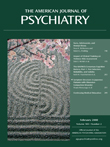Prevalence and Recovery From Anorexia Nervosa
To The Editor: In the August 2007 issue of the Journal , Anna Keski-Rahkonen, M.D., Ph.D., et al. (1) reported substantially higher lifetime prevalence and recovery rates from anorexia nervosa than rates reported in previous studies. To reach these conclusions, the authors diagnosed their subjects retrospectively after interviewing them by telephone. The diagnosis and assessment of recovery relied on the estimation of body mass index. The authors reported values of body mass index 5.9 to 10.2 years earlier, with a precision of 0.1 kg/m 2 (Table 1, Table 2), and a rate of recovery that was almost the same at 5 out of 6 points in time (six, eight, seven, seven, seven, and two patients [Figure 1]). Thus, in six subjects who recovered at least 4.5 years before the telephone interview, body mass index increased from approximately 16 to normal in 6 months. Assuming that their height was 1.6 m and their normal body mass index was 20, these patients gained 10 kg (1.6×1.6×4) in 6 months. An anorexia patient with a body mass index of 16 needs to eat approximately 2500 kcal per day in order to increase her weight at this rate, provided that her level of activity is low. While this marked increase in body mass index is possible, it is not consistent with other clinical reports or observations in clinical practice. For example, one of the authors previously reported that there was no significant increase in body mass index in 20 weeks in anorexia patients with an average body mass index of 17.3 (2) .
Retrospective estimates of body mass index reported by Dr. Keski-Rahkonen et al. suggest a level of precision that may not be entirely plausible. The authors referred to two studies supporting the possibility that telephone interviews can provide reliable retrospective information (3 , 4) . However, one of these studies examined a group comprised of mostly normal weight individuals (3) , and in both studies the time interval between the telephone interview and the determination of body weight was shorter than the corresponding interval in the study conducted by Dr. Keski-Rahkonen et al.
Dr. Keski-Rahkonen et al. should have made an estimate of the error associated with recalling body weight many years later and an estimate of the differences between a population of individuals with anorexia and a population of normal-weight individuals in order to address this limitation of their conclusions.
1. Keski-Rahkonen A, Hoek HW, Susser ES, Linna MS, Sihvola E, Raevuori A, Bulik CM, Kaprio J, Rissanen A: Epidemiology and course of anorexia nervosa in the community. Am J Psychiatry 2007; 164:1259–1265Google Scholar
2. McIntosh VV, Jordan J, Carter FA, Luty SE, McKenzie JM, Bulik CM, Frampton CM, Joyce PR: Three psychotherapies for anorexia nervosa: a randomized, controlled trial. Am J Psychiatry 2005; 162:741–747Google Scholar
3. Schousboe K, Willemsen G, Kyvik KO, Mortensen J, Boomsma DI, Cornes BK, Davis CJ, Fagnani C, Hjelmborg J, Kaprio J, De Lange M, Luciano M, Martin NG, Pedersen N, Pietiläinen KH, Rissanen A, Saarni S, Sørensen TI, Van Baal GC, Harris JR: Sex differences in heritability of BMI: a comparative study of results from twin studies in eight countries. Twin Res 2003; 6:409–421Google Scholar
4. Keski-Rahkonen A, Sihvola E, Raevuori A, Kaukoranta J, Bulik CM, Hoek HW, Rissanen A, Kaprio J: Reliability of self-reported eating disorders: optimizing population screening. Int J Eat Disord 2006; 39:754–762Google Scholar



